Road Bike Party 2
Martyn Ashton teams up with Chris Akrigg and Danny MacAskill to create another amazing road bike stunt video less than three months after suffering severe spinal injuries. If you like it share it.
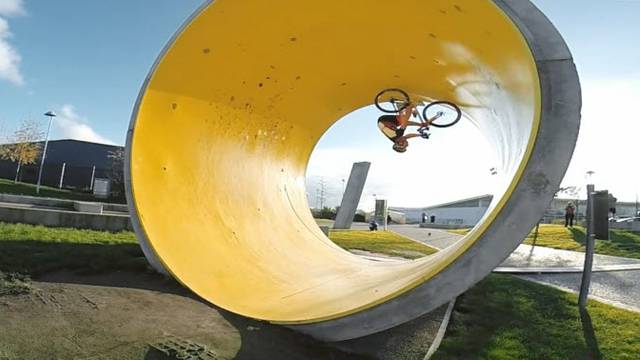
I Love Bicycling is a website that is geared towards cycling for beginners with road cycling tips, training articles, nutrition tips, weight loss, how to’s and bike repair articles.
by Lee Agur
Martyn Ashton teams up with Chris Akrigg and Danny MacAskill to create another amazing road bike stunt video less than three months after suffering severe spinal injuries. If you like it share it.

by Lee Agur
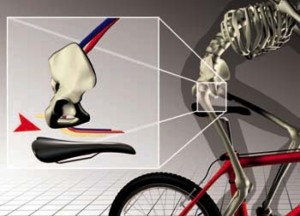 Does cycling cause impotence and erectile dysfunction? Before you freak out… studies have shown that cycling can decrease impotence as well as increase it depending on a few factors.
Does cycling cause impotence and erectile dysfunction? Before you freak out… studies have shown that cycling can decrease impotence as well as increase it depending on a few factors.
If you cycle for less than 3 hours a week it is likely that you are decreasing your chances of impotence much more than you are increasing it.
Anyone cycling over 3 hours a week should take as many steps as they possibly can (listed below) in order to decrease their risk.
Anyone sitting on their couch instead of cycling because they read this article and were afraid to continue biking. Smokers and obese people are also at a very high risk for erectile disfunction.
Studies (such as Massachusetts Male Aging Study) show that prolonged pressure on the perineum while cycling can increase the chances of impotence. The prolonged pressure on the perineum can damage nerves and blood vessels responsible for an erection and the damage could become permanent if the nerves and vessels are continually damaged without adequate recovery.
There are early warning signs for impotence caused by cycling. Almost all cyclists will have either numbness, pain or tingling before there is a serious case of erectile disfunction. If you are experiencing these symptoms it is time to take an active role in preventative measures. If you are not experiencing any of these symptoms then get back out there and keep cycling.
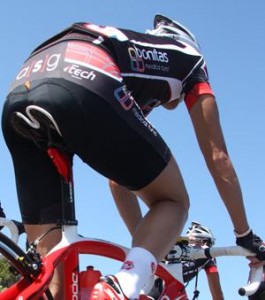 Moral of the Story
Moral of the StoryIf you don’t have any symptoms of numbness, pain or tingling then stop worrying about the impotence risks. If you are experiencing these symptoms follow the steps listed above. If you choose to stop cycling due to fear of impotence it is likely that you will increase your chances more than decrease them unless you are able to substitute cycling with another activity.
by Lee Agur
What is the real difference between carbon fiber vs aluminum vs steel vs titanium… What are the Pros and Cons of each material?
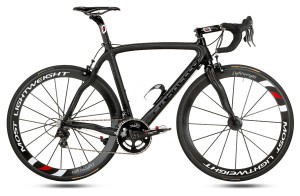 Most high-end bikes are made from this material and for good reason:
Most high-end bikes are made from this material and for good reason:
Many entry level bikes are made from aluminum because it can be made stiff and light enough for a great ride.
Steel will last a life time. It is also the easiest to repair, making it a great bike for touring.
Titanium is a metal that takes aspects from aluminum and steel… better shock absorption that aluminum but not quite as light.
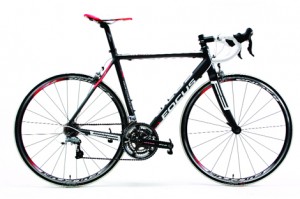 I have at least one bike made out of every material. I use carbon fiber bikes the most; but here are the exceptions:
I have at least one bike made out of every material. I use carbon fiber bikes the most; but here are the exceptions:
Winter riding – I use an aluminum frame as I do not want to ruin my more expensive carbon fiber frames, but still want a bike that climbs fast.
Downhill Mountain Bike – I like my titanium frame. I feel indestructible going downhill.
Touring – I would use a steel frame due to the ease of repairs and dependability.
I realize not everyone is fortunate enough to have such a wide selection of bikes and price point is always a factor. If you are just getting into cycling then most of the time a carbon fiber frame is not necessary. My first bike was aluminum and it was fantastic. I still have it… and I still ride it.
Each material has different qualities keep them in mind when you go to purchase your next ride.
by Guest Post
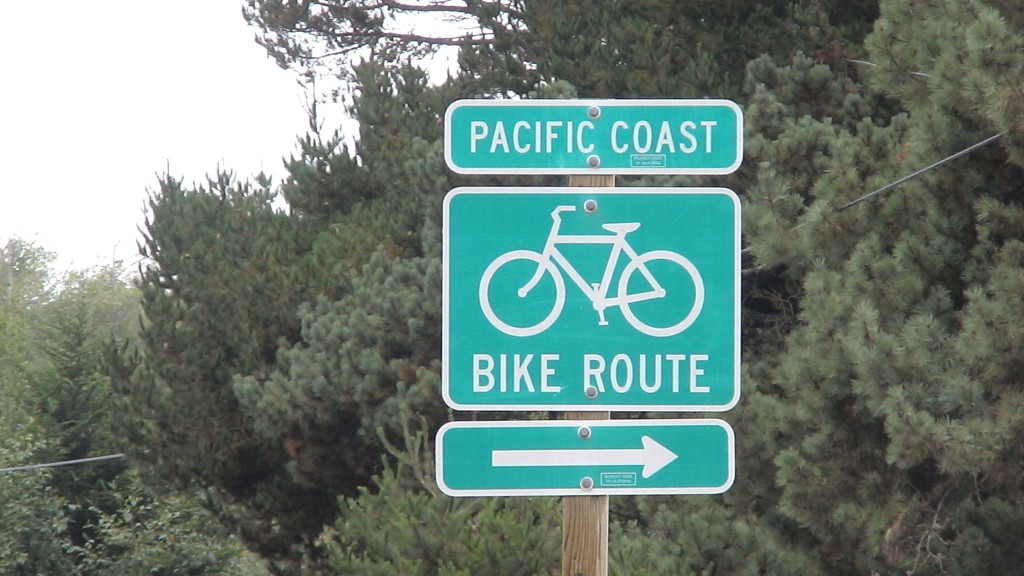
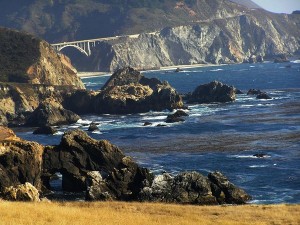 After 58 days of biking from Vancouver, Canada to Cabo San Lucas, Mexico, my sister and I are by no means experts at biking, nutrition or repairing our bikes. However, our journey opened our eyes to a new meaning of biking and traveling. More importantly, it gave us a glimpse of the U.S. and Mexico that those who R.V. their way down Baja or stay in an all inclusive resort simply do not get.
After 58 days of biking from Vancouver, Canada to Cabo San Lucas, Mexico, my sister and I are by no means experts at biking, nutrition or repairing our bikes. However, our journey opened our eyes to a new meaning of biking and traveling. More importantly, it gave us a glimpse of the U.S. and Mexico that those who R.V. their way down Baja or stay in an all inclusive resort simply do not get.
After several months of people back home telling us we shouldn’t or couldn’t do it, we left with both fear and excitement of the unknown. The U.S. Pacific Coast is one of the most bicycled routes in the world – but Mexico… not so much. There are several well written bicycle tour guide books most follow when biking from Canada to the Mexican border. Of all the cyclists we met on our journey, every person with a book had ‘Bicycling the Pacific Coast’ by Vicky Spring. Apparently this is ‘the book’. It had everything you could want from camping, grocery stores, showers and sights to see, right down to the mile marker. However, we didn’t bring any book and it turned out fine for us. There were enough cyclists we met along the way who were all happy to share any information.
I’m not going to go into too much detail of why one should have biking the West Coast on their bikeit list. The reasons are pretty self explanatory in terms of the natural beauty, safe biking route for almost the entire way, affordable and awesome hiker/biker campsites and the good weather (if you hit it right). We departed Vancouver on September 22nd, so the weather was a bit chillier than we would have liked. It actually rained every single day and night we were in Washington and into Oregon. The scariest part for us was crossing the 4 mile Astoria-Megler Bridge at the Oregon border during a small hurricane. The bridge had no shoulder, heavy traffic, and crazy side winds that would come in giant gusts and push us into the traffic. It was really, really scary. The hurricane lasted three days after we made it to Seaside, OR. We were lucky enough to stay in a very generous man’s home for 3 nights otherwise camping would have been miserable!
The weeks leading up to the Mexican border through California was nerve racking. The roads were very, very bike friendly and the traffic was pretty mellow. Road biking in Southern California is popular and there were cyclists all over the road in both directions. We looked a little out of place with our bikes all loaded up with gear. Most cyclists would slow down as they passed us to have a little chat before accelerating again. Every single conversation went something like this: “Where are you guys coming from and where are you headed?”
“We started in Vancouver and we’re headed to Cabo San Lucas,” one of us would say. The cyclist would reply with a very stern and disproving look, “I would not recommend doing that. I got my car stolen a couple years ago after spending a couple of days in Tijuana. You’re going to get your head chopped off!”
Then they would go on to say that the road was not possible to bike on because it is too narrow and bumpy and if you bike off the road you will plummet to your death. After a countless number of the same conversation, we got pretty nervous about what Mexico was really going to be like.
Of course, after all the hype about the dangers of Mexico, it turned out to be one of the best parts of the journey. We decided to boycott the Tijuana border and instead go 50 miles east to the Tecate crossing. The Tecate crossing is an alternate route for truckers who don’t want to deal with the hustle and bustle of Tijuana. We got across that border no problem and made the decision to take a bus 300 km out of the northern region to avoid any potential dangers. We started biking again in El Rosario. After 10 km into our ride we realized that we were going to be totally fine going through Baja. The road was almost entirely paved, with a few sections that were bumpy or under construction. The road is indeed narrow but there was so little traffic that it wasn’t a problem. Don’t get me wrong, we had to be very aware of traffic at all times, because if two R.V.’s or semi trucks were coming in both directions we needed to have time to get off our bikes and move off the road to give them room.
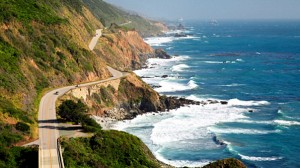 It is no secret that Mexico has developed a negative image for tourists over the past few years. After traveling three weeks down Baja on bicycles we have seen nothing but generous people. The people in rural Baja live simply, have little, and yet are some of the most friendly and helpful people we have met. Almost every single vehicle who passed us gave us plenty of room and a friendly wave, thumbs up, or words of encouragement. Even though we don’t speak the same language they still invited us into their homes and showed us the happiness simplicity can bring. It’s funny how 95% of people warned us about Baja and yet we experienced the opposite of their warnings. When you combine the language barrier, the remoteness of Baja, the extreme heat and traveling by bicycle, we were forced into situations we would otherwise never have experienced. Going out of our comfort zone ended up being the most memorable of the whole journey!
It is no secret that Mexico has developed a negative image for tourists over the past few years. After traveling three weeks down Baja on bicycles we have seen nothing but generous people. The people in rural Baja live simply, have little, and yet are some of the most friendly and helpful people we have met. Almost every single vehicle who passed us gave us plenty of room and a friendly wave, thumbs up, or words of encouragement. Even though we don’t speak the same language they still invited us into their homes and showed us the happiness simplicity can bring. It’s funny how 95% of people warned us about Baja and yet we experienced the opposite of their warnings. When you combine the language barrier, the remoteness of Baja, the extreme heat and traveling by bicycle, we were forced into situations we would otherwise never have experienced. Going out of our comfort zone ended up being the most memorable of the whole journey!
by Guest Post
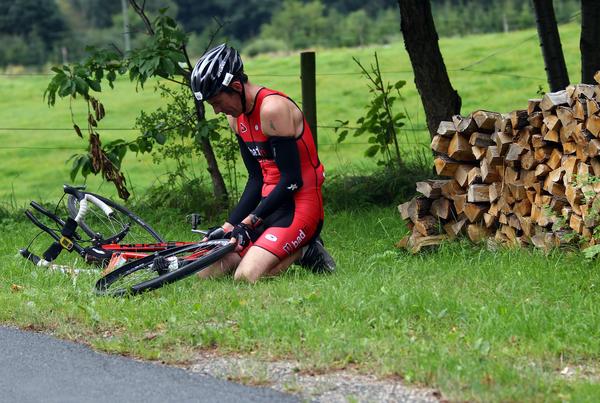
In the mid part of January 2013 my dad finally finished paying for my first Road Racing bike, I had trained most of the winter recovering from a broken collar bone very excited to have the possibility to road race the next season as I have wanted to race road bikes professionally since I was in the 6th grade. I finished out the spin class season feeling awesome about my abilities as a rider. I missed the first month of the season due to complications in getting to the races. Finally in early April, I was able to have the opportunity to go to a race called Vance Creek Road Race, I was told by my teammates that the course would be great to start on and it was relatively flat with one small climb.
I live in Ellensburg WA and most of the races in Washington are on the west side of the mountains, this one included, we drove for 3 hours to get to the race. Upon arrival to the parking lot I was nervous to race for the first time, but i was confident about my ability to ride my bike and the things I learned in my beginner to road racing class earlier in January. I got more and more nervous through my warm up but did my best to stay calm and focused (which was really hard for me since I already have a hard time concentrating on anything) and then I lined up after riding across a smooth gravel area between the start area and parking lot, once I was lined up my nerves eased up a little bit as they normally do when I race, the whistle blew and I calmly started to ride the bike disregarding the fact that it is safer to ride in the front, I decided to hang out in the back. There were only about 25 riders racing but some other juniors got on the front and put the pressure on pretty hard on the downhill section of the course. As I was holding on at the back of the race I remember thinking to myself, “Why are these guys working so hard we are on a flat farm road in the first half of the race?!”. I held on fairly comfortably until the few rolling hills that led up to the short climb to the finish line. I found myself passing half of the field just by using my momentum, when we hit the actual hill the race blew apart and there was one group I saw in front of the group I was in, both groups were about 10 riders. I was willing to work with these guys, so I did, but half way around the second time I decided to make some time by hopping off the front and making them chase but when I got back into the group I felt my tire go soft thinking ” this cant be happening” sure enough I muttered a few choice words and fell back with a very low tire which soon went flat. I walked a good mile then one of the follow cars for another race picked me up and took me back to the parking area.
A few weeks after this happened I got to go to the first Crit of the season, a 2 hour drive, I was very excited. We had one of our buddies with a broken collar bone and another with a torn shoulder going with the two of us that could ride, my shoulder still hadn’t gotten back to strength. Then about 15 min away from the race everyone heard a noise so we stopped the car and sure enough, me involving a bike race what could it be? It was in fact a flat tire on the car, so we had 3 injured people and one other man who was fully capable of changing a tire. We ended up unloading the car, changing the tire, and reloading the car in a super rush to get me there in time to have a chance to race, we drove as fast as we could and I got dressed in the car and we jumped out of the car and I signed a waiver and bam, time to roll out and not 3 min after I got rolled out it was time to start. So here I was cold and not warmed up and in the first lap I got dropped and chased the rest of the race to catch up and take 14th place.
The next race I went to was a beautiful day, I got there and I felt great about it. I did my turn on the front then at the top of a roller on the flat to rolling course I accidentally found myself off the front, upon being sucked back I hit a rock and once again found a flat tire, never could have thought that would happen to me, luckily there was a man just out riding the course and he gave me his wheel seeing that I was very angry because there was no neutral wheels like they told me. I thanked him and road my hardest the rest of the race. Later that day I got my wheel back fixed and the man took his wheel back, to ride the course backwards and watch my buddy Jordan sprint like a pro to the win of his race. They say bad luck comes in three’s, I guess they are correct, except my bad luck continued with other little problems. Moral of this story is, don’t trust your equipment or the tires that come with your bike, don’t worry about the weight you gain by getting flat protection because it may just save you a race.
by Lee Agur
by Lee Agur
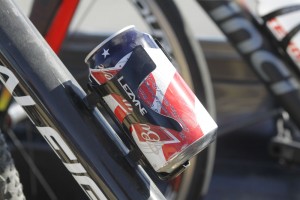 Alcohol and cycling. Do they really mix?
Alcohol and cycling. Do they really mix?How bad is alcohol in relation to cycling performance? Well… some of this information might make you feel depressed. If you would like to plead ignorance in the future I would just stop reading now.
I think we have all heard/said the statement “I am carbo loading” in relation to having that delicious cold beer. Unfortunately, this could not be further from the truth. What actually happens when you start drinking any type of alcohol is that your liver spends all of its energy trying to remove alcohol from your bloodstream; it no longer has the capacity to convert glucose into glycogen.
Glycogen is a major energy source that your body uses to pedal that bicycle. It is generally quite depleted after a ride and should be replenished by consuming carbohydrates.
Since your liver is busy trying to clear the alcohol from your bloodstream and is unable to convert the glucose to glycogen, your body has to do something else with it… I’ll give you one guess… … … Fat. Yup… that glucose will now be stored as fat. Soo… to be more realistic, we should actually be say “I am fat loading.”
Alcohol has been known to affect sleeping. If you do not sleep well then you will not produce as much human growth hormone – a hormone that builds muscle. Coupled with that, alcohol is a diuretic resulting in the fact that you will likely need to get up from your already disturbed sleep.
As you know from my article about hydration as little as a 2% decrease in body water weight decreases your performance. So it is going to be difficult to perform the next day at your best.
On top of all of this, studies have shown that drinking alcohol lowers testosterone levels. Testosterone is key to developing muscle in men AND women.
All of these factors add up to a less than optimal recovery.
1. Having a few cold beer after a ride because I feel I “deserve” it.
I certainly make a point to refuel properly by eating before indulging in my “reward”.
2. Drinking before an event.
It is not a good idea to drink the day, or even 2 days, before an event, as the 2% dehydration rule may effect your outcome.
3. Overall consumption.
Decreasing your overall consumption is relatively easy in small increments. Just focus on cutting out excess as discussed in my 5 healthy tips for cycling article.
This article may be a little depressing;however, I am not going to give up drinking. It took me a couple frosty beverages to complete this article. I am not getting paid to bike for a living and I am all about enjoyment of life. On the other hand, knowing this information certainly has changed a few bad habits.
by Lee Agur
 Brake your bad habits! Proper braking will lead to safer riding and ultimately… faster riding. Scrubbing the proper amount of speed at the right times will make you a more efficient rider saving valuable energy for when it is needed.
Brake your bad habits! Proper braking will lead to safer riding and ultimately… faster riding. Scrubbing the proper amount of speed at the right times will make you a more efficient rider saving valuable energy for when it is needed.
Anticipation of when to brake and how much to brake is half of the battle. This is especially true when you are in a group ride. Keeping a finger or two on the brakes when you anticipate a corner or a slowdown will prevent you from slamming on the brakes because you were already in the right position and you were able to start braking earlier rather than later.
A lot of braking is done by feathering the brakes, this is accomplished by lightly squeezing the brakes. Feathering a brake can be accomplished with one finger and should not slow you down so much that you feel your weight shift forward. This is a particularly important skill when drafting in groups to help prevent yoyo effects and wasted energy.
In the event that you have to brake hard you should keep a few things top of mind.
First, most of your braking power comes from your front brake… I will throw out a generic number like 70% of your braking power comes from your front brake. The reason is that all of your weight an momentum is shifting forward putting more weight and pressure on your front tire… resulting in more grip and more stopping power. This leads me to my next suggestion.
Shift your weight further back and low. If you allowed your weight to shift forward it would become difficult to steer. An easy remedy for this is to be in your drops whenever you anticipate harder braking, this will automatically shift your weight back and low and will also allow you to brace yourself so that your weight does not shift to far forward.
For emergencies only! In order to stop abruptly for potential hazards on the road (fallen cyclists, car doors opening, or that stop sign you nearly missed) you need to slam on those brakes. In order to do that safely you have to move your weight back as far as possible, as low as possible and as quickly as humanly possible. I sometimes throw myself back so fast and so hard that my ass is just over the wheel and my chest is on my seat.
The key to braking fast is touch, weight distribution and experience. In order to brake quickly balance braking as hard as possible without skidding. Without the right touch you may brake too hard and skid out loosing valuable time, but more importantly, control. If you brake too softly you are not able to carry as much speed into a corner and you have to start braking much earlier. This balance is learned through experience. Test the limits of both extremes as you become more comfortable with your bike handling skills.
Remember that most of your braking power is in your front brake, I cannot stress this important fact enough for newer cyclists. This is even more important when the terrain tilts downward. If you are newer to biking I challenge you to try going down a hill and only braking with your back brake then going down that same hill at a similar speed again and try braking with only your front brake in order to learn the important differences.
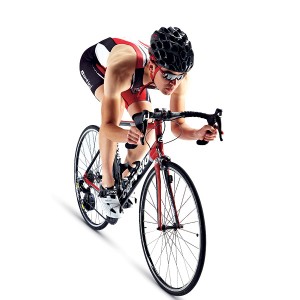 You obviously have to be much more careful on wet and slippery surfaces. If you brake with your front brake too much on slippery surfaces the front wheel will slide out from underneath you and you may end up in a ditch faster than you know what happened. Your experience will be very important here as the proper touch and weight distribution will be amplified. Try to keep your bike more upright in order to prevent slip outs, break earlier and more gently and if you start to feel as if you are losing traction ease up on the breaks.
You obviously have to be much more careful on wet and slippery surfaces. If you brake with your front brake too much on slippery surfaces the front wheel will slide out from underneath you and you may end up in a ditch faster than you know what happened. Your experience will be very important here as the proper touch and weight distribution will be amplified. Try to keep your bike more upright in order to prevent slip outs, break earlier and more gently and if you start to feel as if you are losing traction ease up on the breaks.
by Lee Agur
Cyclists are the biggest sandbaggers and secret trainers around. They’ll say anything to soften you up for the kill. Don’t let this happen to you. Study this handy rider’s phrasebook to find out what they really mean when they say:
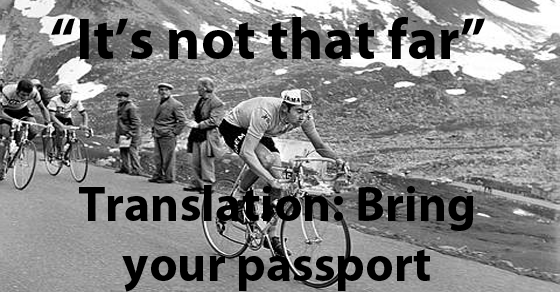 I think my tire pressure is low.”
I think my tire pressure is low.”
Translation: Slow down, will ya?
“I definitely have a flat tire.”
Help me change it
“This trail is a blast!”
I hope you have good medical insurance
“I’m on my beater bike”
I had this baby custom-made in Tuscany using Carbon Fiber blessed by the Pope. I took it to a wind tunnel and it disappeared. It weighs less than a fart and costs more than a divorce.
“This is a no-drop ride”
I’ll need an article of your clothing for the search-and-rescue dogs.
“That wasn’t that bad…”
Oh…my…god… I’m…having…a…heart…attack…
“Wow, that was at least 10 feet high”
5 feet max. probably closer to 4
“I don’t have a low enough gear.”
I’ve gained 5 pounds
“I’ve decided to buy a lighter bike.”
I’ve gained 10 pounds
“That climb wasn’t that bad!”
I’m going to puke
“I’m carbo loading.”
Pass the beer
“I’m tapering.”
I haven’t ridden in 2 months
“If you’re a good bike handler, you don’t need to wear a helmet.”
I’m so stupid and a brain injury wouldn’t affect me
“She hammers!”
She’s faster than me
“I bonked.”
I went too hard and all I had to eat was a twinkie
“If you don’t crash, you’re not going fast enough, dude!”
I crash a lot
“I don’t own a car.”
I’m a better person than you
“I do all my own bike maintenance.”
When I squeeze the front brake lever, the bike shifts gears
“Thanks for waiting.”
Wipe that smug grin off your ugly face
“Been riding much?”
How fit are you?
“Not much. You?”
My anaerobic threshold is 250 and my resting pulse is 14
“Well, let’s take it easy today.”
Ready, set, go!
“Hold on, there’s something wrong with my bike.”
Let’s stop so I can rest
“My tires suck!”
This climb is killing me!
“It’s getting dark.”
I wanna go home
“This bike is a piece of ****!”
I can’t ride worth ****
“This hill is easy.”
This trail’s pretty tough but I’m gonna try and lose you on it
“My bike was acting funny.”
Otherwise I would have whooped your butt!
“He’s pretty good.”
I know I’m better than him
“He spends a lot of time biking!”
I wish I was as good as him
“That thing’s a piece of ****.”
I wish I had one…
“It’s not that far”
Bring your passport.
Info from forums.bicycling.com
by Guest Post
 Getting on my bike for the first ride was unforgettable – down pouring rain, crazy side winds, one long road, hills, a bridge, and my mom screaming in the background telling us not to go. I wore a thin jacket that I thought was waterproof but apparently wasn’t, so I was soaked to the bone and shivering pretty quickly. I have a problem with packing (I always pack way too much) so I packed a few nights before leaving and only put in the bare necessities.
Getting on my bike for the first ride was unforgettable – down pouring rain, crazy side winds, one long road, hills, a bridge, and my mom screaming in the background telling us not to go. I wore a thin jacket that I thought was waterproof but apparently wasn’t, so I was soaked to the bone and shivering pretty quickly. I have a problem with packing (I always pack way too much) so I packed a few nights before leaving and only put in the bare necessities.
Good thing my sister handed me a waterproof jacket the day before leaving because the next few weeks would be nonstop wet. I’ll admit… I left unprepared for our tour, but what the hell I made it from Vancouver, Canada to Cabo San Lucas, Mexico nonetheless. I personally think leaving with less is better than leaving with too much not only because of the weight on your bike, but because if you really need it you can buy it along the way very easily (and maybe even cheaper). For example, I had to buy a headlamp (duh… didn’t hear about the end of that one for awhile). It was hard for me puckering up and handing over a lot of cash to be able to do this tour, especially since I’m a 20 year old, halfway through a degree and no job. Looking back though I’m happy I bought waterproof Ortlieb paniers, otherwise biking through Washington would have been brutal. Buying the right equipment will make you happier along the way and not to mention more comfortable.
Speaking of being comfortable…. It made me think of an uncomfortable night and Sandra still states that it was the worst night we endured during our trip. We got to a town, Moss Landing, and the only campsite we were planning on staying at was strictly for RVs. It was late in the day and we had no choice but to stay there for a night – but where? Our two options were either forking out the big bucks for a hotel or stealth camping. We ended up stealth camping behind the Monterey Aquarium Research Centre under an overhang. It doesn’t sound that bad right? It was noisy, dreary, very foggy, lots of humidity that made us sticky, and to top it off there was an odd man who wouldn’t leave us alone. In fact, he came back at 7:30AM the next morning and followed us on his bike as we were leaving town to Monterey.
Later that day we reached Monterey and decided to make a visit to the famous Monterey Bay Aquarium (after all, we spent the night at their research center for free!) After spending a good 4-5 hours in the aquarium enjoying looking at all the sea creatures we ventured outside to where we locked up our bikes. Long behold the same odd man who had followed us the night before, and followed us that morning was waiting for us at our bikes! We were freaked out. Luckily, my sister and I were traveling with two men, Gerry and Rylan, and they dealt with the stalker. It wasn’t the best experience but the fact is there’s always going to be ups and downs on any trip, people who you will never forget and people you will want to forget, but it’s part of the journey. When you go through downs you just have to keep on pedaling.
Written by Ella MacDonald. Get more detail of their Epic Journey here and if you wish to donate to their cause do that here. More details on their adventure soon.